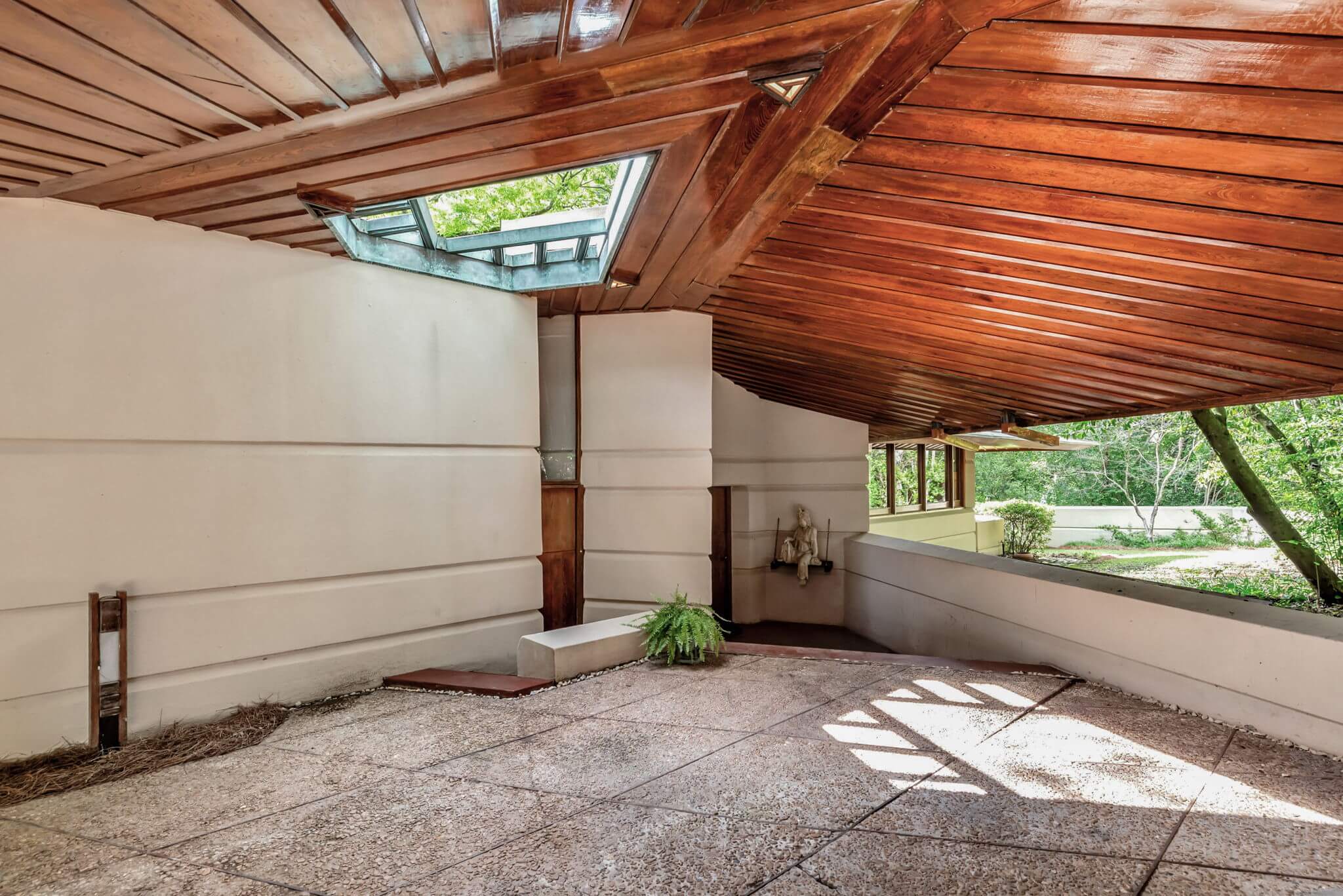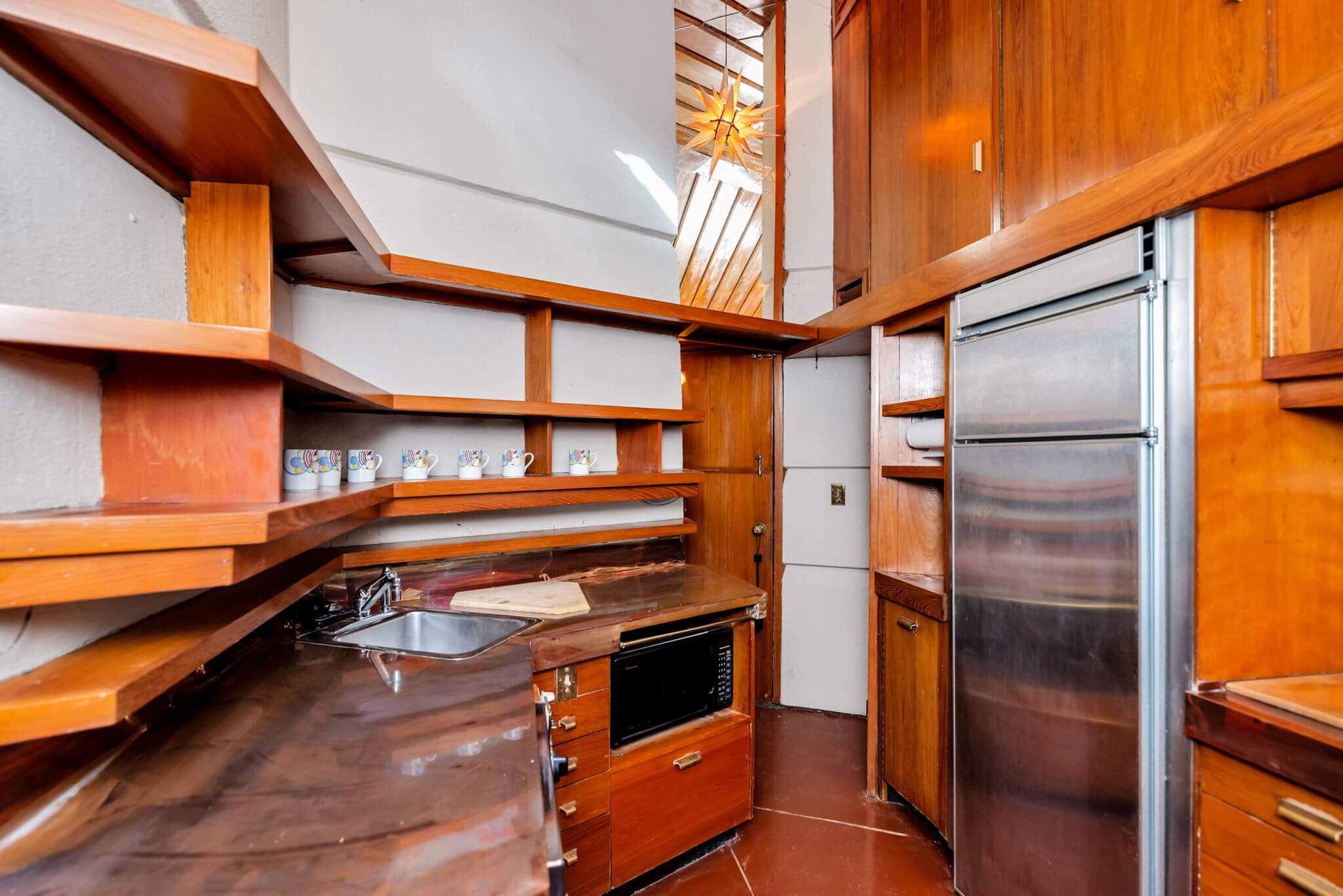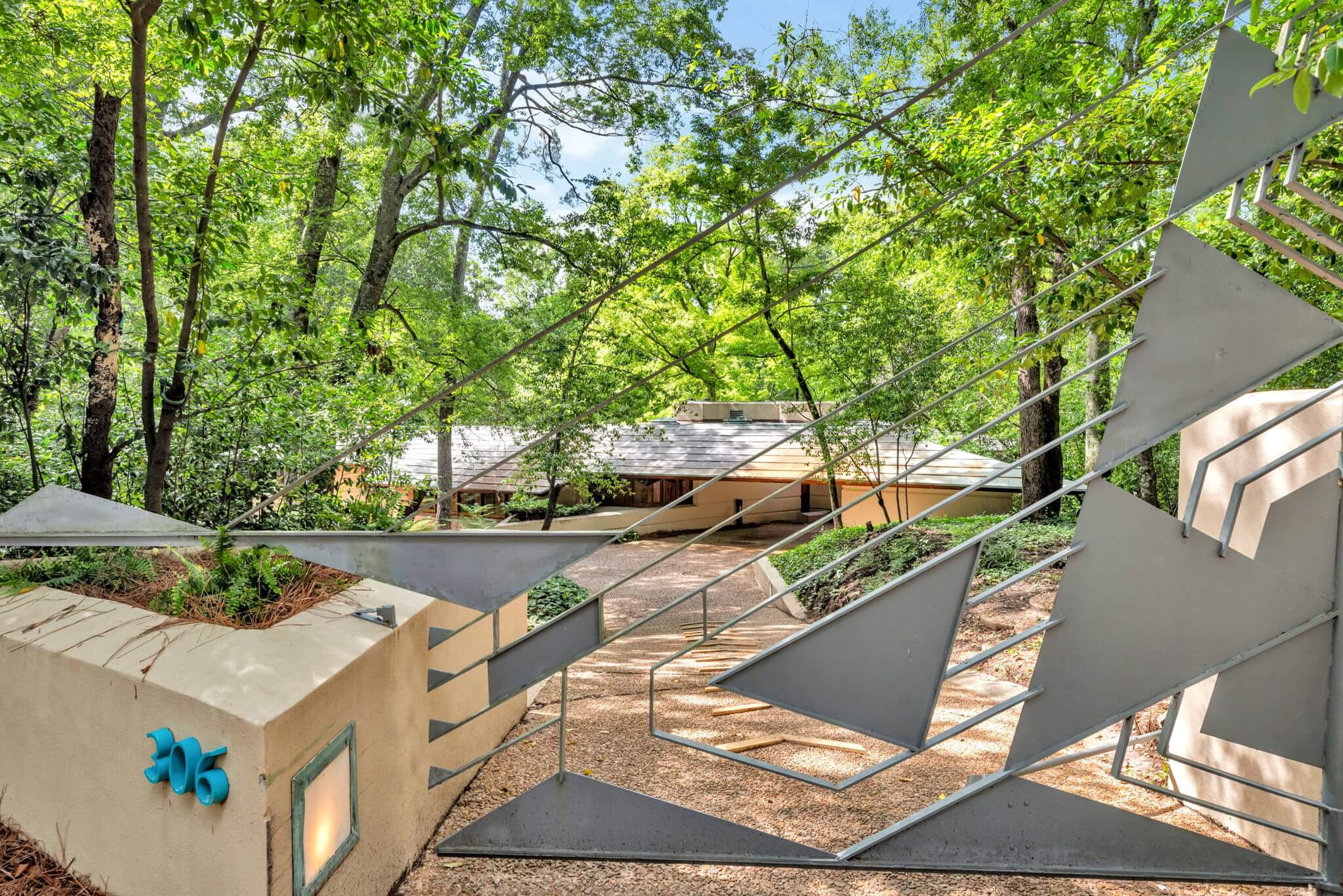At Fountainhead, the Frank Lloyd Wright–designed home tucked into Jackson, Mississippi’s Fondren neighborhood, nothing is square. The house emerges from the hillside with corners that slice obliquely into space and shadows fall at unexpected angles. Even the light, strained through skylights and cypress louvers, enters rooms diagonally.
But Fountainhead’s impact isn’t just visual, it’s atmospheric. Inside, surrounded by Heart Tidewater Red Cypress, the architecture functions exactly as Wright intended his Usonian homes to. It softens the line between indoors and outdoors, turning everyday mundanities into a deliberate, almost ritual experience.
This week, the Mississippi Museum of Art (MMA) confirmed that it has acquired the property, ensuring that one of Wright’s late-career masterworks will enter public stewardship for the first time. For Jackson, it is a rare architectural inheritance. For the museum, it marks a bold expansion of its mission. And for admirers of Wright, it is another chapter in the long effort to protect his Usonian legacy.
Wright designed Fountainhead in 1948 for J. Willis Hughes, an oil speculator who asked the architect for something ambitious on a steep, wooded parcel. Wright’s response was a parallelogram, an entire home organized by diamond-shaped geometry, extending into the landscape like an unfolding fan.
Everything inside serves the larger rhythmic order with triangular soffits, narrow clerestories, angular built-ins, light fixtures and ottomans that echo the home’s geometry. There are no right angles, no decorative flourishes, nothing that breaks the continuity of material. Built without studs, sheetrock, brick, tile, or paint, the house is pure cypress, glass, and copper.
Its nickname, “Fountainhead,” comes partly from Wright’s design. The bedroom tapers toward a fountain that cascades into a pool which then flows down to a stream. But the name also nods to Ayn Rand’s 1943 novel The Fountainhead, whose uncompromising architect protagonist was long rumored to be inspired by Wright.

Hughes and his family lived in the home until 1980, when architect Robert Parker Adams bought it and began a restoration that became his life’s work. He repaired damage caused by shifting Yazoo clay, restored the kitchen, preserved original furniture, and gave tours so detailed that guests sometimes stayed for two hours.
The house was listed earlier this year, weeks before Adams’s death, for $2.5 million, but his widow, Sherri Mancil, sold the house for just $1 million including all of the original Wright furniture to safeguard the home’s future and ensure that the architectural ensemble remains intact.

The Mississippi Museum of Art’s acquisition is a strategic, city-shaping move. The museum, long a cultural anchor in downtown Jackson, has been expanding its mission to better serve neighborhoods across the city. Fountainhead gives it a way to embed programming, tours, and partnerships directly into Fondren, while also positioning Jackson as a destination for 20th-century American architecture.
Only a handful of museums in the country own Wright houses; the most notable is Crystal Bridges Museum of American Art, whose relocation and preservation of Wright’s Bachman-Wilson House has become a major draw. Fountainhead enters that lineage, but unlike the Bachman-Wilson House, it will remain on its original site, where its architecture cannot be divorced from the contours of the land that shaped it.

To stand inside Fountainhead is to understand why Wright insisted that architecture be an extension of nature. In his 1932 autobiography Wright wrote, “No house should ever be on a hill or on anything. It should be of the hill. Belonging to it. Hill and house should live together each the happier for the other.” Fountainhead fulfills this ethos literally. Its walls ripple along the slope; its windows frame trees as if they’re part of the furniture; its geometry is determined not by human preference but by the hillside’s logic.
Now, the Mississippi Museum of Art holds the responsibility for protecting Fountainhead, working with architects and preservation specialists to restore the house and establish a long-term maintenance plan. The museum will oversee all programming on-site, with visitors shuttled from its downtown campus. An opening date will be announced once restoration is underway.
→ Continue reading at The Architect's Newspaper
